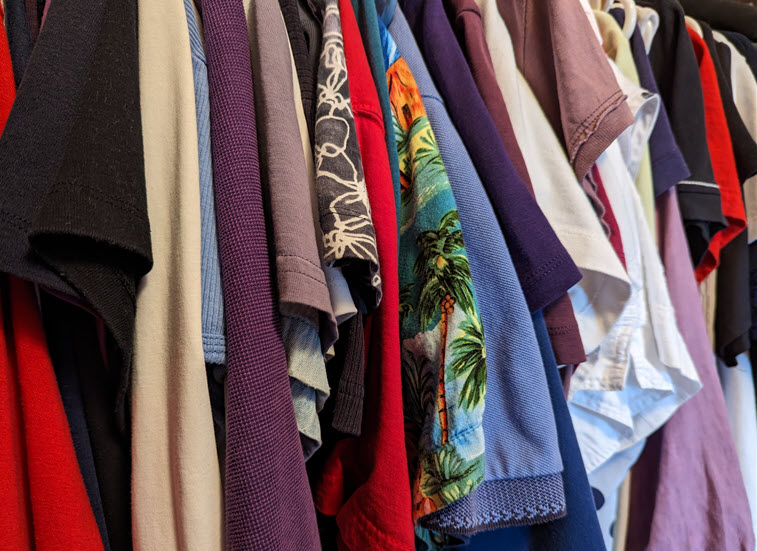Shopping for secondhand clothing has become trendy among young people and more accepted as a great option for thrifty management of resources.

There are many reasons why purchasing clothing that is “lightly used” should be considered. Not only can it save you money, but it also decreases waste and is good for the environment.
Top 10 reasons we love secondhand clothes:
- Saves money! This obvious benefit cannot be overstated. There are plenty of items to pay for each month, so saving money on purchasing pre-owned clothing is a great idea.
- It is good for the planet. Keeping textiles out of landfills is an eco-friendly way to shop. Valuable resources are used in the construction of new clothes from fabric, to labour, to water and energy used to produce and ship around the world. Recycling clothing saves resources and lessens pollution caused by production, and that is good for everyone.
- Support a good cause. Thrift stores are often managed by groups that raise funds for charity or community service. It is a win-win situation when you can buy new-to-you clothing while supporting a good cause. The Salvation Army, MCC, Canadian Diabetes Association and Big Brothers, Big Sisters organization are a few of the groups who operate thrift stores. Local churches and religious groups may also run thrift stores to help members of their community.
- Better quality clothes last longer. People often refer to today’s clothing as disposable, meaning the item will not last long. This inexpensive, poorly made clothing is a recent trend, and often older clothes are made from higher quality fabrics. Thrift store clothing items will often have a longer life than clothing made today.
- Proven quality. Secondhand clothes have already been washed, usually several times, so it is easier to spot any potential weaknesses or problem areas. Another bonus is that most of the shrinkage has generally happened so what you are trying on shouldn’t shrink significantly after you wash it.
- Easy to create a unique and personal style. Many unique pieces can be found at thrift stores, and this clothing can be useful in building a wardrobe that is reflective of your personal style. It is doubtful that many others will own the same piece of clothing, making your look your very own. Lower costs make it affordable to try new things without spending much.
- Encourages home-sewing and creativeness. Upcycling of thrift store finds is an exciting hobby that many young people have embraced. Look online for inspiration and videos of how boring basics can be turned into unique creative clothing pieces with a completely different look. Upcycling clothing provides a creative outlet while you improve your sewing skills.
- Easy and relaxed shopping experience. Clothes in a secondhand store are usually arranged by size (unlike fashion stores who arrange by style and colour). You will be able to shop in one section of the store rather than having to move about and potentially miss items. Shopping tip: sizes have changed over the years, so you should always explore sizes up and down just in case you can find a gem that fits! Another benefit that makes thrift shopping pleasant is that salespeople are less pushy because they don’t work on commission.
- Selling clothes can generate income. Items that you no longer wear can be sold on consignment to secondhand stores or through online thrift accounts. This saves them from sitting at the back of your closet and provides funds you can use for other things you really need.
- The hunt for clothes can be a fun outing. With donations arriving daily, clothing is constantly changing at secondhand stores. Exploring the racks to find one “treasure” can be a lot of fun. Take a friend, keep an open mind, and you might be surprised how much you enjoy it!
Many communities have a local thrift store. The next time you find yourself looking for new clothing, books or other items for your home, make an effort to stop in and look for something used before you purchase new. You may even find a unique treasure that you’ll enjoy much more than a new mass-market item.
Read these articles next:
Simple Ways to Save Everyday
Sew Your Own Face Mask






